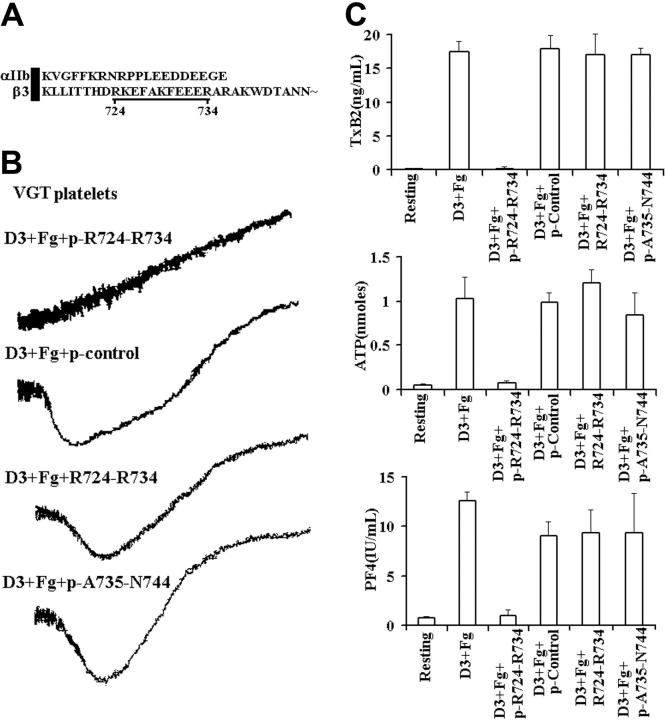Figure 4.
The β3 palmitoylated peptide pRKEFAKFEEER (pR724-R734) negatively regulates αIIb-mediated outside-in signaling. (A) Sequences of the αIIb and β3 cytoplasmic domains present in normal platelets. (B) Aggregation traces of VGTΔ724 platelets treated with D3 (30 μg/mL) in the presence of Fg (250 μg/mL) with or without the β3 palmitoylated peptide p-R724-R734 (pRKEFAKFEEER, 10 μM), which corresponds to the region of β3 underlined in panel A; this sequence is part of the cytoplasmic domain missing in VGTΔ724 platelets. The peptides pEAERKFERKFE (p control; 10 μM), a scrambled, palmitoylated version of pRKEFAKFEEER, a nonpalmitoylated form of the peptide R724-R734 (RKEFAKFEEER, 10 μM), and the palmitoylated β3 peptide p-A735-N744 (pARAKWDTANN) were used as controls. In contrast to the control peptides, pRKEFAKFEEER eliminated secretion-induced shape change by D3 plus Fg-treated VGTΔ724 platelets. (C) TxA2 production (top) as well as ATP (middle) and PF4 secretion (bottom) by VGTΔ724 platelets treated with D3 (30 μg/mL) in the presence of Fg (250 μg/mL) with or without p-R724-R734 (10 μM), or 10 μM of the control peptides. There are no significant differences (P < .05) between the values of D3 plus Fg, D3 plus Fg plus pEAERKFERKFE or pARAKWDTANN-treated platelets for TxA2 production and secretion of ATP and PF4. The error bars represent SD, n = 4. In some cases, the values of the SD were so small that the bars cannot be seen.

